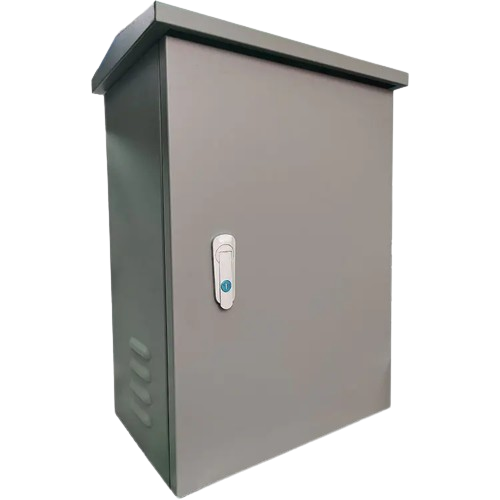RONGMING Outdoor Electrical Enclosure Box Installations require careful consideration to ensure safety and longevity. Here are some essential tips to address common concerns:
What is a mounting pole?
A mounting pole is a long, often cylindrical structure used to support various objects or equipment. It's commonly used in construction, engineering, and outdoor applications. Mounting poles can serve various purposes, including:
- Flagpoles: These are mounting poles specifically designed to display flags. They can be found in public spaces, outside buildings, or residences.
- Antenna Poles: Mounting poles are often used to support antennas for communication purposes, such as TV antennas, radio antennas, or cellular antennas.
- Light Poles: In outdoor settings like streets, parking lots, or sports fields, mounting poles are used to hold lighting fixtures for illumination.
- Solar Panel Mounts: Mounting poles can be used to support solar panels, either in ground-mounted arrays or as part of a rooftop system.
- Security Cameras: Mounting poles are often used to install security cameras for surveillance purposes in both indoor and outdoor environments.
- Utility Poles: These are taller mounting poles used by utility companies to support electrical wires, telephone lines, or other utilities.
Mounting poles come in various materials such as metal (steel, aluminum), wood, or fiberglass, depending on the application and environment they are intended for. They can be fixed directly into the ground or attached to a base or foundation for stability.
What is weather proof enclosure?
Weatherproof enclosures are normally created from long lasting substances consisting of aluminum, stainless steel, fiberglass, or polycarbonate, which offer resistance to corrosion and might resist out of doors conditions. They regularly function seals, gaskets, or different sealing mechanisms to save you water, dust, and different contaminants from coming into the enclosure.
These enclosures can also additionally have numerous capabilities relying at the particular necessities of the system being housed, consisting of:
Ventilation: Some enclosures consist of air flow structures or fanatics to save you overheating of the system inside.
Mounting Options: They can also additionally have mounting brackets or different hardware for smooth set up on walls, poles, or different structures.
Locking Mechanisms: To steady the system inside, weatherproof enclosures can also additionally consist of locks or different safety capabilities.
Cable Glands: These are used to offer a weatherproof seal round cables coming into or exiting the enclosure.
Tamper Resistance: Some enclosures are designed to face up to tampering or vandalism.
Weatherproof enclosures are typically used for out of doors packages consisting of housing electric controls, telecommunications system, safety cameras, out of doors lighting fixtures controls, and different touchy electronics that want safety from the factors whilst closing operational.
Waterproofing outdoor electrical boxes is crucial to protect them from moisture, corrosion, and other environmental factors. Here are some effective methods to waterproof outdoor electrical boxes:
Silicone Sealant:
- Apply a generous amount of silicone sealant around the openings and seams of the electrical box.
- Ensure all gaps, edges, and entry points are completely sealed to prevent water ingress.
- Use a waterproof silicone sealant designed for outdoor use to withstand weather conditions.
Rubber Gaskets:
- Install rubber gaskets or O-rings around the edges of the electrical box cover.
- These gaskets create a tight seal between the cover and the box, preventing water from entering.
- Make sure the gaskets are clean and in good condition to maintain an effective seal.
Waterproof Enclosures:
- Choose an electrical box specifically designed for outdoor use, typically made of weatherproof materials such as plastic or metal.
- Ensure the enclosure has a tight-fitting cover with a gasket to seal out moisture.
- Look for enclosures with an IP (Ingress Protection) rating indicating their level of waterproofing.
Cable Glands:
- Use cable glands to seal the entry points where cables enter the electrical box.
- These fittings provide a watertight seal around the cables, preventing water from seeping into the box.
- Select cable glands that match the size and type of cables being used.
Drainage:
- Ensure proper drainage to prevent water from pooling around the electrical box.
- Install the box with a slight tilt or add drainage holes at the bottom to allow water to escape.
- Avoid installing electrical boxes in low-lying areas prone to flooding.
Regular Maintenance:
- Inspect outdoor electrical boxes periodically for signs of damage, wear, or deterioration.
- Replace worn gaskets, damaged seals, or corroded components promptly to maintain waterproofing.
- Keep the area around the electrical box clear of debris to prevent blockages and water buildup.
By employing these waterproofing techniques, you can help ensure the long-term functionality and safety of outdoor electrical boxes in various weather conditions.
How do you mount an electrical box outside?
Mounting an electrical box outside requires careful consideration to ensure stability, safety, and protection from the elements. Here's a step-by-step guide on how to mount an electrical box outside:
-
Select a Suitable Location:
- Choose a location for the electrical box that is easily accessible and meets code requirements.
- Ensure the area is clear of obstructions and provides sufficient space for maintenance and operation.
-
Choose the Right Box:
- Select an outdoor electrical box specifically designed for outdoor use.
- Choose a box made of weatherproof materials such as plastic, fiberglass, or metal.
- Ensure the box is large enough to accommodate the electrical components and wiring.
-
Prepare the Mounting Surface:
- Clean the mounting surface to remove any dirt, debris, or protrusions.
- If mounting on a wall, use a level to ensure the surface is even.
- Mark the mounting holes on the surface using the electrical box as a guide.
-
Secure the Box:
- Use screws, bolts, or anchors appropriate for the mounting surface to attach the electrical box securely.
- Drill pilot holes for the screws or anchors to prevent splitting or damage to the mounting surface.
- Attach the box to the mounting surface using the marked holes and fasteners.
-
Seal the Mounting Holes:
- Apply silicone sealant around the edges of the mounting holes to create a waterproof seal.
- This helps prevent water from entering the wall or surface through the mounting holes.
-
Install Wiring:
- Carefully route the electrical wiring into the box through the appropriate knockout holes.
- Use cable clamps or connectors to secure the wiring and protect it from damage.
- Follow electrical code requirements for wiring installation, including proper grounding.
-
Secure the Cover:
- Place the cover on the electrical box and secure it using the provided screws or fasteners.
- Ensure the cover fits tightly to protect the electrical components from moisture and debris.
-
Test the Installation:
- Once the electrical box is mounted and wired, test the installation to ensure proper functionality.
- Check for any loose connections, exposed wiring, or other issues that may need attention.
-
Regular Maintenance:
- Periodically inspect the outdoor electrical box for signs of damage, corrosion, or wear.
- Tighten any loose screws or fasteners and replace worn gaskets or seals as needed.
- Keep the area around the box clear of debris to prevent obstruction and ensure proper ventilation.
By following these steps, you can safely and securely mount an electrical box outside, providing reliable power distribution while protecting the components from environmental factors.
How do I protect my outside electrical panels?
Protecting your outside electrical panels is crucial to ensure the safety and functionality of your electrical system, especially in outdoor environments where they are exposed to weather and other elements. Here are some ways to protect them:
- Install a Weatherproof Enclosure: Use a weatherproof enclosure specifically designed for outdoor use to house your electrical panels. These enclosures provide protection against rain, snow, dust, and other environmental factors. Ensure the enclosure is properly sealed to prevent moisture and debris from entering.
- Location: Choose a suitable location for your electrical panel enclosure. It should be placed in an area that is not prone to flooding and is shielded from direct exposure to sunlight if possible. Additionally, ensure there is enough clearance around the enclosure for maintenance and ventilation.
- Grounding and Bonding: Properly ground and bond your electrical panel to protect against electrical faults and lightning strikes. This helps to divert excess electrical current safely to the ground.
- Regular Maintenance: Perform regular inspections and maintenance to ensure the enclosure remains in good condition. Check for signs of corrosion, loose connections, or damage to the enclosure. Clean debris and vegetation that may accumulate around the enclosure.
- Secure Access: Keep the electrical panel enclosure securely locked to prevent unauthorized access. This helps protect against tampering and vandalism, as well as ensuring the safety of individuals who may come into contact with the equipment.
- Install Surge Protection: Install surge protectors to safeguard your electrical equipment from power surges caused by lightning or electrical fluctuations. Surge protectors can be installed at the panel or individual circuits to provide added protection.
- Proper Ventilation: Ensure adequate ventilation within the enclosure to prevent overheating of electrical components. This may include vents or fans to promote airflow and dissipate heat.
- Labeling and Documentation: Clearly label the electrical panel with its function and associated circuits. Maintain documentation of the electrical system layout, including circuit maps and diagrams, for quick reference during maintenance or troubleshooting.
By following these steps, you can help ensure the longevity, safety, and reliability of your outside electrical panels.
Post time: Apr-23-2024








